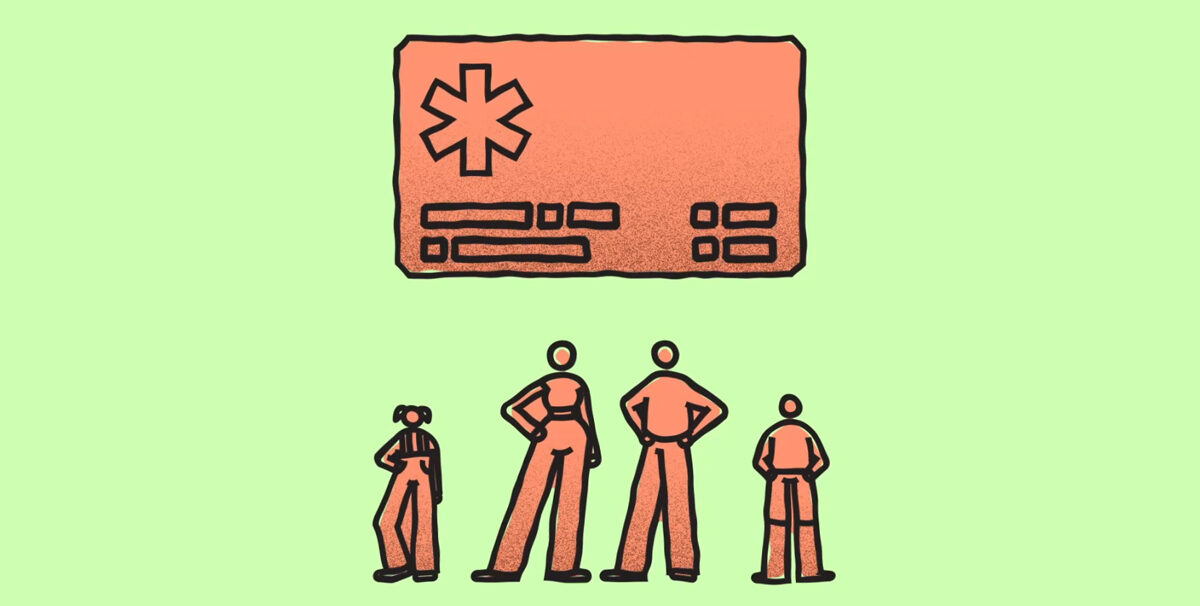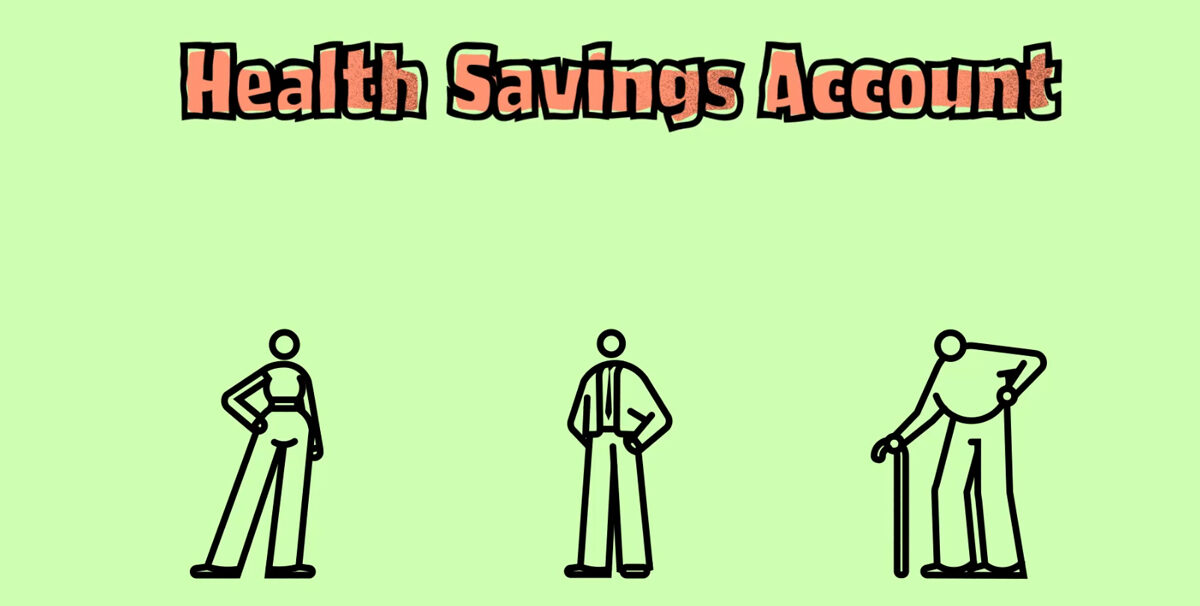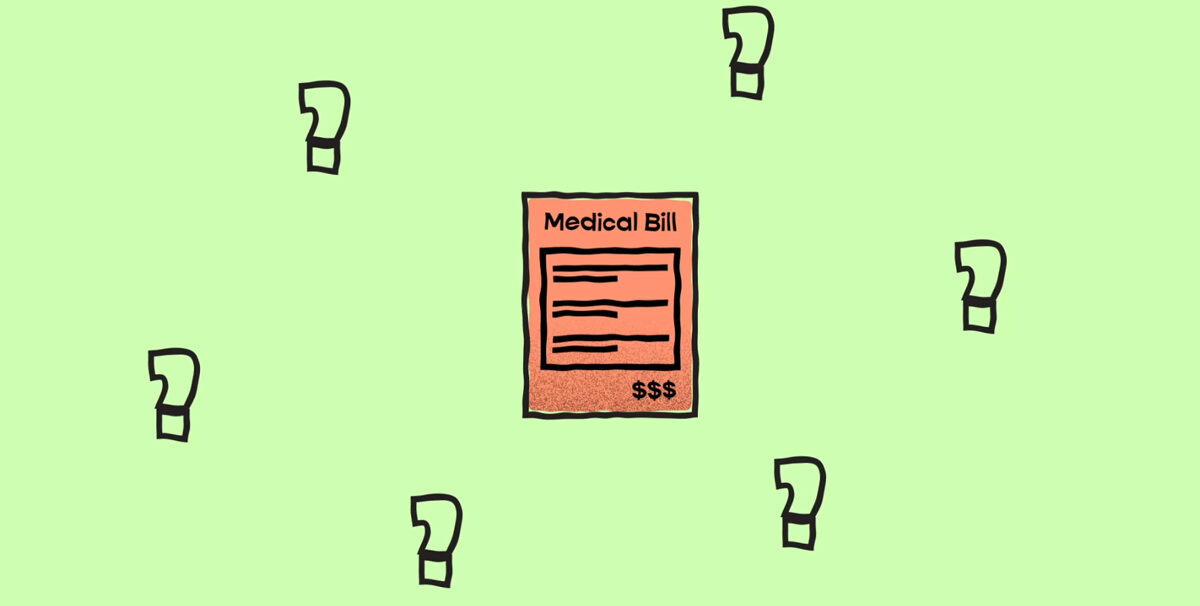The foods and beverages we consume have a significant impact on our health. In fact, 60% of adults have one or more diet-related chronic diseases. The Dietary Guidelines for Americans (2020-2025) offers science-based nutrition advice to develop healthy eating habits and reduce chronic disease risk. Everyone can benefit from a healthy eating pattern, so start simple with modest changes each day. The latest guidance provides four overarching guidelines:
- Follow a healthy dietary pattern at every life stage.
- Customize your foods and beverages to reflect personal preferences, cultural traditions, and budgets.
- Focus on meeting food group needs with nutrient-dense foods that are rich in vitamins and minerals
- Limit foods and beverages high in added sugars, saturated fats, and sodium.
Take action each week:
- Health Portion Sizes
- The Importance of Sleep
- Trans Fat: The Worst Fat
- The Benefits of Mindful Eating
Healthy Portion Sizes
Did you know that in the 1980s, a typical bagel had 140 calories and a 3-inch diameter? Today, a bagel averages 6 inches and is a whopping 350 calories! With 64-ounce fountain drinks, jumbo-size snacks, massive restaurant entrées and the ability to “super-size” fast food for pennies more, it is easy to get confused about proper portion size.
What is a portion?
A portion is the amount of a specific food an individual eats for a meal or snack. Many factors affect food portions, such as age, gender, activity level, appetite, and where or when the food is obtained and eaten.
What is the difference between portions and servings?
A portion is the amount of food you choose to eat. There is no standard or correct portion size. A serving is a standard amount (issued by the USDA) used to give advice about how much to eat, and to identify how many calories and nutrients are in a particular food. This is the information located on the nutritional label of a food product (serving size).
For example: You eat a sandwich with two slices of bread.
The nutrition label on the bread states that the serving size is one slice.
Your portion is two slices, which equals two servings.
Healthy Portion Sizes
For a general idea of the amount of food you should be consuming, use the following recommendations:
A serving of meat is about 2 or 3 ounces—about the size of the palm of your hand.
One serving of grains is equal to one slice of bread, one ounce of cereal, or half a cup of pasta or rice.
A serving of fruit or vegetables is equal to one piece of fresh fruit or vegetable, half a cup of chopped, or ¾ cup of either juice. In general, it is not as necessary to be vigilant about vegetable and fruit intake, as any amount is healthy—just be aware of the sugar content in fruit.
The USDA recommends you make at least half your plate fruits and vegetables, along with lean protein and whole grains.
Break Down Your Meal
It might be easier to figure out how much you are consuming if consider what you are about to eat. For example, here is how you would break down a spaghetti dinner:
Spaghetti Noodles –
Your portion: 2 cups
Serving size: ½ cup
Number of pasta servings: 4
Tomato Sauce –
Your portion: 1 cup
Serving size: ½ cup
Number of sauce servings: 2
Meatballs –
Your portion: 6 ounces
Serving size: 2 ounces
Number of meatball servings: 3
Don’t forget to calculate any appetizers, drinks or side dishes you consume with your meal as well:
Garlic Bread –
Your portion: 2 slices
Serving size: 1 slice
Number of bread servings: 2
Soft Drink –
Your portion: 24 ounces
Serving size: 12 ounces
Number of beverage servings: 2
The USDA website provides guidelines for serving size and recommended servings per day of each food group. The recommended servings depend on age and gender, but here are some general guidelines for adults:
Vegetables: 2.5-3 cups per day
Fruits: 2 cups per day
Grains: 3-4 ounces per day
Protein: 5-6 ounces per day
Dairy: 3 cups per day
Based on these guidelines, that one sample meal would have satisfied protein and pasta recommended servings for the entire day.
When taking into account other meals, snacks, and beverages consumed throughout the day, it is easy to see why so many Americans overeat.
Try to keep your daily intake within the general guidelines set by the USDA. Your portions do not have to match the standard serving size—they can be smaller or larger. However, the amount you eat throughout the day should match the total amount of food that is recommended.
MyPlate
The USDA created MyPlate to replace the traditional food pyramid, to make it easier for Americans to make healthy food choices. If you find it difficult to adhere to the recommended daily servings, try focusing on these MyPlate guidelines instead:
- Make half your plate fruits and vegetables.
- Make at least half your grains whole grains.
- Go lean with protein.
- Switch to fat-free or low-fat dairy.
Tips for Choosing Sensible Portions
To avoid overeating when eating out, consider the following strategies:
- Choose a small- or medium-size portion. If out for dinner, see if you can have the lunch portion.
- If the main dish portions are larger than you want, order an appetizer or side dish instead, or split the main entrée with a friend.
- Never force yourself to keep eating. When you are full, stop. Take the rest home and enjoy it as a meal the next day.
- Stay away from “all-you-can-eat” buffets.
To control portion sizes at home, try the following strategies:
- Every so often, measure out the typical portion of foods you eat often, using standard measuring cups. This will help you estimate the portion size—and you will likely be surprised to find out exactly how much you are eating.
- Use a smaller plate for your meal. People tend to eat more out of habit when it is on a bigger plate.
- Put sensible portions on your plate at the beginning of the meal, and do not go back for seconds. Chances are, if you sit back and let your meal digest, you will find you are satisfied in about 10-15 minutes.
The Importance of Sleep
Did you know that 1 in 3 American adults don’t get the recommended seven hours of sleep? While this might not seem problematic, consistently failing to get enough sleep can put you at risk of significant health problems. In fact, not getting enough sleep is linked to a variety of chronic conditions like Type 2 diabetes, heart disease, depression and obesity. Moreover, failing to regularly get enough sleep can lead to chronic fatigue, which can increase the risk of productivity issues at work and distracted driving crashes.
How Much Sleep Is Enough?
According to the Centers for Disease Control and Prevention (CDC), adults ages 18 and older should get seven hours or more of sleep per night. The CDC also stresses that all sleep isn’t created equal, and that good sleep quality is essential to your health and well-being.
To determine your sleep quality, evaluate if you’re waking up multiple times throughout the night, if you wake up feeling unrested (even if you slept for seven hours) or if you experience breathing problems while you’re sleeping. While your sleep quality may be improved by implementing better sleep habits, symptoms of poor sleep quality may be attributed to a sleep disorder that you should see your doctor to discuss treatment options.
Benefits of Getting Enough Sleep
Sleep is essential for maintaining a healthy, productive and low-stress lifestyle. Here are just a few benefits of getting a good night’s sleep:
- Increased productivity and work performance—Giving your body enough time to go through all the sleep stages is necessary for energy, muscle repair, improved memory, and the release or regulation of important hormones that are essential for everyday functions within the body.
- Decreased weight gain—According to the National Sleep Foundation, not allowing your body enough time for rest and regulation can lead to an increased appetite. The particular hormones that give you the feeling of being full or hungry can become irregular, which may cause increased feelings of hunger that lead to weight gain.
- Improved mental health—Getting enough sleep can help alleviate feelings of fatigue that may contribute to stress, depression and anxiety. Symptoms of fatigue can be drowsiness, loss of energy and even mood swings.
Tips for Improving Your Sleep Habits
If you’re experiencing trouble getting enough sleep every night, the following five tips may help you get a better night’s sleep:
- Eat nutritiously. Good eating habits can help you sleep better and feel energized all day. Also, avoid big meals right before going to bed.
- Exercise regularly. This also helps your sleep quality and daytime energy level. Just be sure to avoid vigorous exercise close to bedtime.
- Avoid stimulants like caffeine before bed. Stimulants like caffeine and nicotine promote alertness, which can make it difficult for you to fall and stay asleep, so it’s important to avoid them for three to four hours before bed.
- Stick to a schedule, even on the weekends. Try to go to bed and wake up at the same time each day to keep your body on a consistent schedule.
- Put the electronics away. Blue-light emitting electronic devices can prohibit you from getting a good night’s sleep. To reduce the effects of these sleep-stealing devices, refrain from using them for at least an hour before bed.
For More Information
Getting at least seven hours of sleep every night will help keep costly chronic conditions at bay and combat fatigue. For more information on how to improve your sleep habits or to address sleep issues, contact your doctor today.
Trans Fat: The Worst Fat
Trans fat is vegetable fat that has been chemically altered by a process called hydrogenation. This process turns healthy fat, such as corn oil or soy bean oil, into a solid, unhealthy fat. The result is a type of fat that is worse for you than saturated fat, and is linked to increased LDL (“bad cholesterol”), decreased HDL (“good cholesterol”), and increased triglyceride levels, which all contribute to heart disease and insulin resistance.
How Much is Too Much?
The American Heart Association recommends that less than 1% of your daily calories come from trans fat (that’s two grams of trans fat for a 2,000 calorie diet).
How Do You Avoid It?
Read nutrition labels and look at the saturated fat and trans fat. Remember that the information is given per serving, so check the serving size as well. Choose reduced-fat and fat-free products, but only if other unhealthy ingredients such as high fructose corn syrup or partially hydrogenated oils have not been added. Always check ingredient listings for the term partially hydrogenated. The ingredient list is different than the nutrition label, and is often where fat information is hidden. Ingredient information is listed from greatest to smallest amounts, so if partially hydrogenated oils or high fructose corn syrup are listed as the first few ingredients, choose another product.
What Types of Foods Have It?
Here’s the top 10 list of where you are most likely to find trans fat:
- Margarine – Look for no hydrogenated oil and the least amount of both trans and saturated fat. If you choose butter, use small amounts and those that are whipped or mixed with canola oil.
- Packaged foods – Mixes like cake and pancake mixes have added fat. Bake homemade instead.
- Soup – Dried and liquid soups both contain very high levels of trans fat.
- Fast food – Anything deep-fried will have trans fat. Order food grilled instead.
- Frozen foods – Check the label. Even frozen foods listed as “low fat” may contain trans fat.
- Baked goods – Donuts, cookies and cake are loaded with trans fat. Bake your own instead.
- Candy and desserts – Lots of trans fat hides here too. Choose jelly beans or licorice over chocolate.
- Chips and crackers – Go for baked or whole grain. Have popcorn instead of pretzels.
- Breakfast foods – Cereals and breakfast bars are included. Choose whole grain instead.
- Toppings, dips and condiments – Salad dressing, gravy, mayonnaise, whipped toppings and similar items are loaded with fats. Use oil and vinegar or low-fat milk creamers instead.
Remember, often when fat is removed, sugar, salt and hydrogenated oils are added, so don’t trust a food simply because it says “low fat” on the label.
The Benefits of Mindful Eating
Taking time to be mindful of your eating process and not focusing on restricting calories could enhance your awareness of the experience, improve your relationship with food and help you lose weight. Mindful eating can be an essential practice in today’s world, where multitasking is common practice. Multitasking while eating can lead to less satisfaction with your meals, less awareness of the food, and often, overeating.
This article explores mindful eating, its benefits and how to practice this healthy approach.
What Is Mindful Eating?
Mindful eating is a type of mindfulness meditation that focuses on being fully present and aware of one’s feelings, thoughts, physical sensations and environment during meals. As such, mindful eating makes you fully aware of the eating experience and your thoughts and feelings about food.
This concept encourages focusing on preparing and consuming your food in a distraction-free environment. By thinking about the food, you may become more aware of the signals your body sends to your brain that indicate satisfaction and fullness, which can help you improve your general health and well-being.
Benefits of Mindful Eating
Mindful eating offers several physical and mental health advantages, including the following:
- Better body cue recognition—You’ll better understand your body’s hunger, craving and fullness cues. You can also establish a better overall relationship with food when aware of your cues.
- Overeating prevention—Mindful eating allows you to check in with yourself and pause snacks or meals if you aren’t actually hungry. A pause can help you slow down and break the cycle of overeating and binge eating.
- Healthier food choices—When you’re more aware of how food makes you feel, you may choose more nutritious foods that can make you feel energized.
- Stress reduction—Mindfulness-based exercises, including mindful eating, can help reduce cortisol (or stress) levels.
- Weight loss—Although research is mixed on the definitive connection between mindful eating and weight loss, you’re likely to lose weight if you properly listen to your hunger cues.
Mindfulness practices may also help improve anxiety, depression, eating disorders and stress symptoms.
Tips for Mindful Eating
Mindful eating may sound simple, but it takes practice. Consider the following mindful eating tips:
- Honor your food. The mindful practice starts before the food is on your plate. It’s important to acknowledge where the food was grown and who prepared the meal.
- Evaluate your hunger. It’s equally important to continue to assess your appetite while eating. Checking in with your physical hunger and satiety sensations can help you learn your cues.
- Start with small portions. Modest portions can help you respect your hunger and satiety cues. Single-serving portions may also look more substantial on smaller plates or bowls.
- Pay attention to your food. Engage your senses and notice what you see (e.g., food texture, color and appeal), smell, feel (e.g., texture and temperature), taste and hear (e.g., crunch).
- Eliminate distractions. Being distracted while eating can fuel a negative relationship with food or lead to overeating or emotional eating. Also, avoid eating in a bedroom, living room or vehicle.
- Slow down. Make a conscious effort to chew your food more to aid digestion and allow more time to recognize your body’s cues.
- Don’t skip meals. Going too long without eating increases the risk of extreme hunger, which may lead to a quick and easy food choice—which is not always a healthy one.
Multitasking while eating has become the new normal, but you can be in control and aware of the process and your feelings. You can try the eating approach at your next meal or start small by attempting the practice once a week—for example, establish a “Mindful Monday.”
Contact a registered dietitian if you need additional help or guidance with mindful eating or general eating habits.





